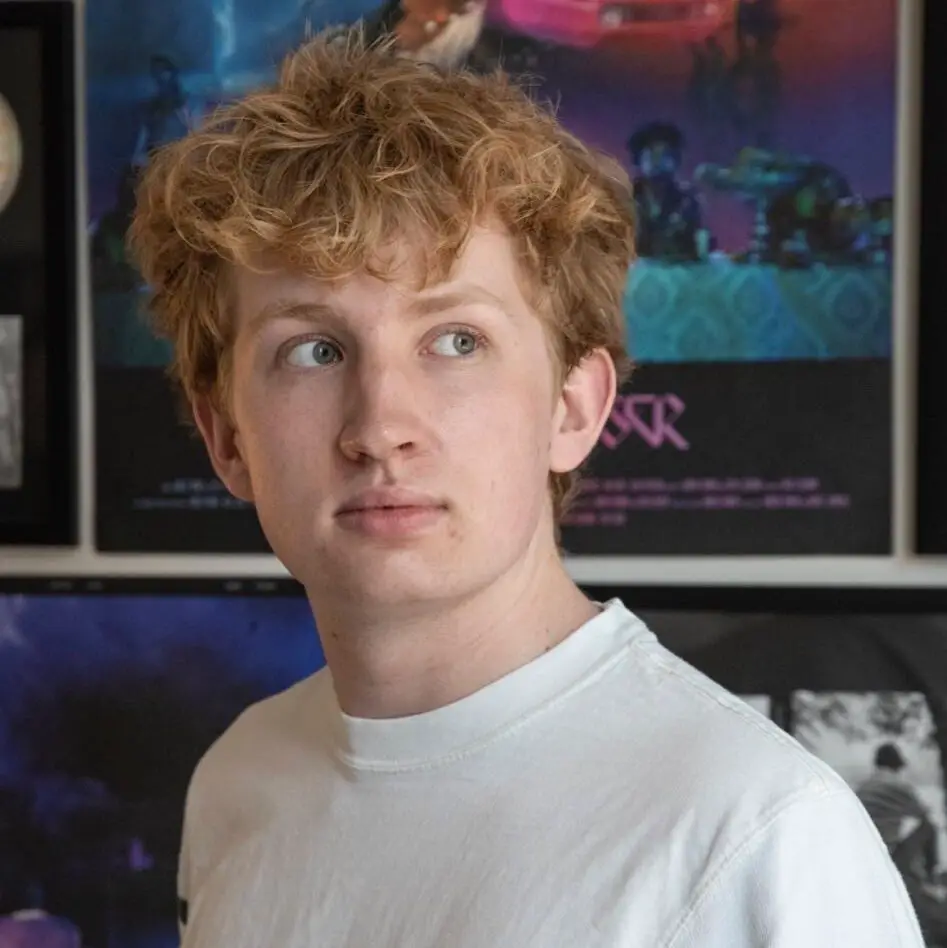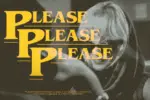What do Beetoven’s 1810 composition “Für Elise,” The Supremes’ 1965 classic “Stop! In the Name of Love” and SZA’s 2022 bonus track “Awkward” all have in common? All three clock in just shy of a three-minute runtime. While Beethoven’s work had no time constraints given the inability to record music, The Supremes and SZA had their own physical and circumstantial constraints to the length of their music. For The Supremes, it was the 45 RPM format, and for SZA it was digital replay value.
From 45’s to CDs, MP3’s to Spotify, the duration of the average song has decreased in recent years, positioning average song length in a notably similar place as it was 50 years ago. Has our collective attention span simply run out, causing today’s artists to cut bridges and amend their work? Or is this trend rather a nostalgia cycle harkening back to the days of two-and-a-half minute 45’s?
Early music conducted in the 18th century was a privilege enjoyed for those lucky enough to be in the presence of the music. Whether it be hearing one of the great composers of the time play or listening to a family member play the piano, music was a luxury experienced only in the flesh. Because recorded sound would not be invented for close to a century later, the only way for people to listen to music was to attend a live performance. The only way to “record” music was by writing out compositions on paper. Without recorded sound, music could be as long or as short as the conductor or performer wanted, with Beethoven’s longest composition running upwards of one hour.
In 1890, the gramophone introduced the world to flat-disc records as an alternate way to listen to music, different from Thomas Edison’s phonograph. As time went on, the invention of record singles spun at 78 rotations per minute, referred to as a “78,” began to circulate up until 1959. 78’s came in both 10” and 12” sizes, allowing for three and four minutes of play, respectively. In 1949 RCA Records introduced a 7” format of record singles spun at 45 RPM, which allowed for up to five minutes of play per side. These 45’s granted artists an opportunity to record and distribute music in a longer format than what 78’s offered. Throughout the 1950’s and ‘60s, the average length of a song landed somewhere around the two-and-a-half minute mark, given that 7” records used in jukeboxes still offered limited space.
But songs over three to four minutes still existed. Donna Summer’s 1975 single “Love To Love You Baby” has a run time just under 17 minutes long. The song appeared in its entirety on Summer’s studio album of the same name, taking up the full A side of the 33″ Long Play Record (LP). But while the full length version was available on the LP, 45’s featured two “single versions” on either side of the 7” disc: one 4:57 in length and the other 3:27. These shortened versions allowed for easier radio play and were less of a “commitment” for the casual listener.
During the 1980’s song length varied between shorter, radio-friendly lengths and longer, album-oriented arrangements. All of the songs on Metallica’s 1984 album “Ride the Lightning” ranged from four to nine minutes in length. Madonna’s 1983 debut album featured a variety of song lengths, with some fitting the popular three-and-a-half minute length, and others nearing seven minutes.
45’s remained popular until the end of the 1980’s when record companies occasionally pressed music on 45’s for collector purposes, but largely turned focus toward the production of cassettes. As the mediums that music was produced on evolved, the need for production and distribution of singles became largely obsolete. In 1990, as MP3 formats increasingly came into use, the average duration of a song was four minutes and nineteen seconds according to a 2022 report conducted by Statista.
Throughout the 2000’s and 2010’s CD singles would be distributed to radio stations for promotion, but the average consumer had no real use for physical singles outside of collectors editions. Especially once services like iTunes and later Spotify and Apple Music were established, almost all music was distributed digitally. In this digital format, it didn’t matter whether songs were two or twenty minutes long, since streaming imposes no physical limitations to duration. The same study conducted by Statista found that the average length of a song in 2020 was three minutes and twenty seconds, down a whole minute from that 1990 peak. The study also found that in 2010 the average song length was just over four minutes.
The “single version” format has evolved over time as well. “Radio edits” were born out of the shortened “single version” from the days of 45’s, and were used to allow for maximized commercial profit on radio stations. “Radio edits” allowed for stations to play more songs in an hour and therefore are more likely to keep listeners from changing to a different station. Longer intros and outros may be cut in radio edits, along with censorship of curse words and language deemed inappropriate for the masses. Music continues to be created with long intros, bridges and extended outros, but radioplay played a role in keeping popular music in a certain structure and length.
As radio prominence has faded over time, and social media has evolved alongside music consumption, social platforms influence the duration of music.
TikTok has undoubtedly played a key role in shaping the length and structure of songs. The social platform’s initial 15 second media length constraint influenced the masses when the world found itself spending more time online during COVID-19 lockdowns in 2020. As TikTok gained popularity, it’s safe to say that the collective attention span among users, particularly of young media consumers, shifted.
Shortened attention span is something that began to impact the masses pre-pandemic, especially with social platforms such as Instagram and X, formerly known as Twitter. Inundating audiences with an overwhelming amount of news and opinions, these platforms are a revolving door of ideas that the human brain simply isn’t intended to consume wholly. This was only accelerated by digital media replacing human interaction during COVID-19 lockdowns.
Musicians took notice of the trend and seemingly overnight, bridges vanished from many songs, second verses were left out altogether and an increasing amount of music struggled to meet the three-minute mark. The shortened length of songs is comparable to the length of music in the 1960’s, for example. But the reasons behind the shortened length are different. Where The Supreme’s had to ensure their music would fit on one side of a 7” 45, Jack Harlow’s two minute songs shorten themselves in an effort to make more revenue and gain faster traction online. But just like with disc jockeys of early radio, both artists still aim to amplify their commercial successes through their music.
Last year, Morgan Wallen’s “Last Night” (2:44), Tate McRae’s “Greedy” (2:12), Jack Harlow’s “Lovin on Me” (2:18) and SZA’s “Kill Bill” (2:34) all found virality on TikTok before climbing the charts. All of these songs are under three minutes in duration, which indicates that to some consumers, the shorter the song the better. However, not all of the year’s biggest hits were short. Doja Cat’s “Agora Hills” (4:25) and “Paint The Town Red” (3:51) and Drake’s “Slime You Out” featuring SZA (5:11) were all top 10 hits, and took a longer approach to structure and duration.
However, it is important to note that many of these hits that are longer in duration tend to contain a soundbite or refrain that appeals to the insatiable hunger of virality. Doja Cat’s “Paint The Town Red” has been used over two million times on TikTok, with much of its use being the song’s chorus and post-chorus. Even though the song is technically longer than some of the other viral hits, its success can in part be credited to its earworm hook that is created to initiate virality.
@nianaguerrero had to hit this one too! ( dc @Liam Maughan ♬ Paint The Town Red – Doja Cat
Countless SZA songs — or rather, 15 seconds of her songs — have trended on the app. The first 20 or so seconds of Flo Milli’s “Never Lose Me” has been used over 360,000 times on the app at the time of writing this. Because platforms like TikTok only afford a few seconds of music to achieve virality, music has become shortened in many cases in an effort to increase the number of streams. Put simply: the shorter the song and catchier the soundbite, the more replay value it has which will likely increase charting position. The increasing trend in “sped up versions” of songs has also taken off due to social media usage, with Ariana Grande, Doja Cat, Summer Walker, Lil Uzi Vert and even Mariah Carey co-opting the even shorter format.
These sped up versions of songs aren’t necessarily a “bad” thing, but they beg the question of whether or not media consumers are headed for a complete loss of attention span. If the average person doesn’t want to sit through a three-and-a-half minute song, what will the future of music look like?
But longer form music production has not been entirely lost just yet.
Dua Lipa and Ariana Grande have both released extended versions of their singles “Houdini” and “yes, and?” respectively. At the time of writing this, Grande has released an “extended mix,” “instrumental,” “a cappella,” “slowed,” “sped up” and “extended mix instrumental” of “yes, and?” Not only does this offer an opportunity for more revenue and chart positioning, but instrumental versions and extended edits keep fans interested in remixing and DJing.
The Weeknd and Swedish House Mafia released an extended mix of their 2022 collaboration “Moth To A Flame.” Kylie Minogue re-released both her 2020 album “Disco” and 2023 album “Tension” in extended formats, lengthening each song beyond its initial studio release by several minutes. Not only were Minogue’s “extended mixes” put up on streaming platforms, but they also were released on LP. Taylor Swift’s “All Too Well (10 Minute Version) (Taylor’s Version) (From The Vault)” (combined with the standard 5:29 recording) hit number one on the charts in 2021. Though the 10 minute version was acknowledged as the “original” and “unedited” version of the song by Swift, the demand from fans to finally hear the full-length version indicates that there’s still an interest in music taking on longer forms.
♬ All Too Well (10 Minute Version) (Taylor’s Version) (From The Vault) – Taylor Swift
These releases are proof that while shortened and sped up music may be the current trend, artists who value transporting listeners elsewhere for longer than three minutes still exist. It’s challenging to definitively say whether or not music will continue to become shorter, or if this is a mere trend that will pass in due time. What’s safe to say is that both shorter and longer music continue to persist. Only time will tell where the length of music will end up.

















